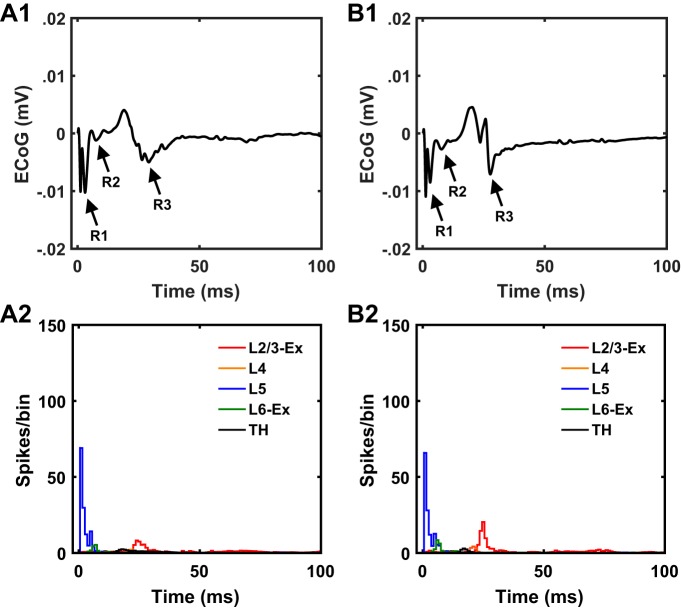Fig. 14.
Model-based deconstruction of subthalamic nucleus (STN) deep brain stimulation (DBS)-induced cortical evoked potential (cEP) by evaluating the robustness of signal propagation through the layer 5 (L5)→L5→L6→thalamus (TH)→L4→L2/3 pathway. A1 and A2: cEP response and underlying spiking activity, respectively, to 4.5-Hz STN DBS of 60% L5 pyramidal cell axons generated by the cortical microcircuit with intact synaptic connections. B1 and B2: cEP response and underlying spiking activity, respectively, to 4.5-Hz STN DBS generated by a reduced cortical microcircuit with all synaptic connections disconnected except the L5→L5→L6→TH→L4→L2/3 pathway. The reduced microcircuit with only an intact L5→L5→L6→TH→L4→L2/3 polysynaptic pathway was sufficient to activate L5 and L2/3 pyramidal neurons following STN DBS-evoked stimulation of L5 pyramidal axons and subsequently generate the R1, R2, and R3 responses. ECoG, electrocorticographic recordings; Ex, excitatory neurons in L2/3 and L6.

